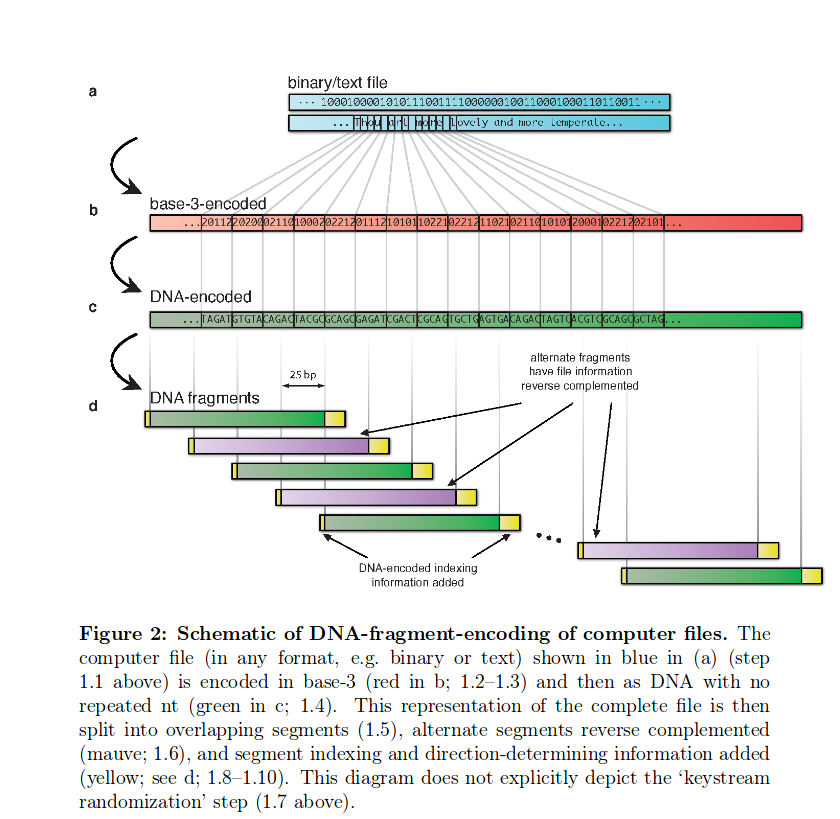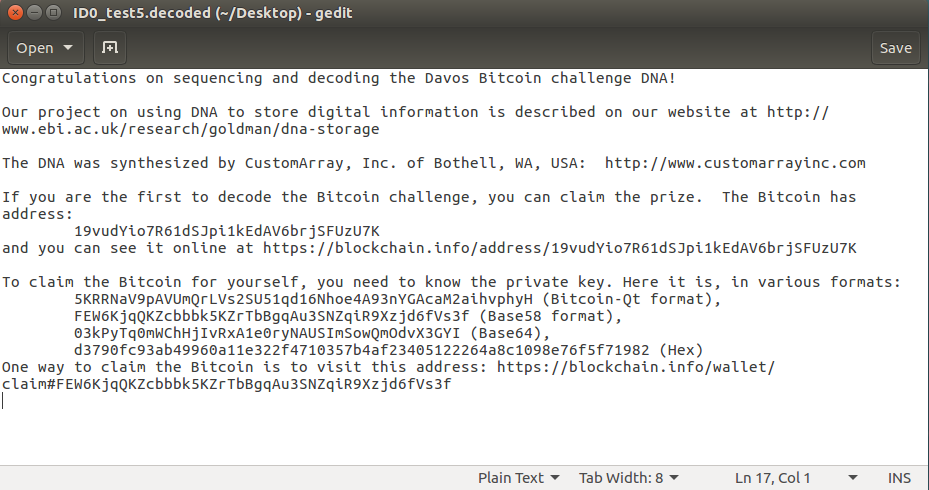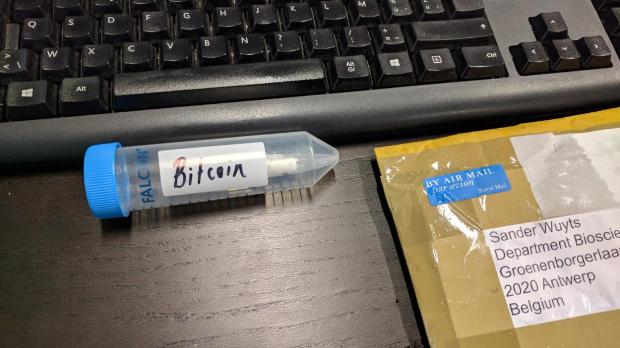Just five days before a three-year old Bitcoin puzzle was set to expire, a PhD student cracked the code. A three-year old Bitcoin mystery came to an end last week after Sander Wuyts, a 26-year old Belgian PhD student at the University of Antwerp, cracked a code that revealed the key to one bitcoin inside a strand of synthetic DNA.
The key—chemicals arranged to represent a string of text—was placed in the DNA as part of the DNA Storage Bitcoin Challenge. The challenge began in 2015 after Nick Goldman, a researcher at the European Bioinformatics Institute, gave a presentationon using DNA to store information at the World Economic Forum’s annual meeting in Davos, Switzerland. During this presentation, Goldman distributed tubes of DNA in which he had encoded the key to a digital wallet containing one bitcoin.
The first person to sequence the DNA and decode the files would be able to claim the bitcoin, which was worth about $200 at the time. Now, that same bitcoin is worth over $10,000.
Goldman set a three-year time limit on the challenge, which would’ve closed on Monday if nobody was able to crack the code. By last December, nobody had managed to claim the bitcoin so Goldman tweeted a reminder that the contest was about to close. The tweet caught the attention of Wuyts, who requested a DNA sample from Goldman and spent the last month working with his colleagues at school to crack the code.
“When I read the tweet, it goes without saying that I was extremely enthusiastic,” Wuyts wrote on his blog. “I still remember myself announcing to all of my colleagues that we should drop everything we’re doing and start solving this challenge .”
Wuyts already had a leg up in the competition: Not only was he studying computational microbiology at the University of Antwerp, he also had access to sophisticated tools for genome sequencing. Once he had sequenced the DNA sample that Goldman sent him, Wuyts had to crack the code that it contained.
As detailed by Goldman in his pioneering Nature paper on DNA storage, to encode information into DNA you take a text or binary file and rewrite it in base-3 (so rather than just ones and zeroes, there are zeroes, ones, and twos). This is then used to encode the data in the building blocks of life, the four nucleobases cytosine, thymine, adenine and guanine. As Wuyts explained to me, coding the data as nucleobases depended upon which nucleobase came before. So, for instance, if the previous base was adenine and the next pieces of data is a 0, it is coded as cytosine. If the next piece of data is a 1, it’s coded as guanine, and so on. After the data is encoded as synthetic DNA fragments, these fragments are used to identify and read the actual files stored in the DNA.

In the case of the Bitcoin challenge, there were a total of nine files contained in the DNA fragments. The files were encrypted with a keystream, which is a random series of characters that is included with the actual plain text message to obfuscate its meaning. The keystream code had been provided by Goldman in a documentexplaining the competition.
After running the code, Wuyts was able to combine the DNA fragments in the correct order to form one long piece of DNA. After working out some technical kinks, Wuyts was able to convert the DNA sequence into plain text, revealing the private key and unlocking the bitcoin (as well as some artefacts, including a drawing of James Joyce and the logo for the European Bioinformatics Institute). He had cracked the puzzle just five days before it was set to expire.

As for what he is going to do with the bitcoin, Wuyts said he is “probably going to sell it when the time is right and use some of the money for my research. With the rest of the money, I can thank the colleagues who helped me and celebrate my PhD in style.”
Although Goldman’s contest is the first time that DNA has been used to store the private key to cryptocurrencies, his point was to draw attention to the amazing potential of DNA as a long term storage option. This new method of storing information is already being investigated by companies like Microsoft, which wants to add DNA data storage to its cloud, and as a potential solution to humanity’s mounting data problem.
Who knows, maybe DNA storage will be the popular new way to store the private keys to your cryptocurrency as well. But as Wuyts demonstrated, this DNA storage method is still not impervious to hacks.
“You have to take into account that the process of reading out the data takes a couple of days instead of milliseconds compared to data saved on a hard drive,” Wuyts told me in an email. “So related to cryptocurrency, I guess that storing your private keys on DNA would be a good idea to prevent yourself from panic selling. In addition, it might also be one of the safest ways to store your keys today as not everyone has instant access to DNA-sequencing technology (yet).”
Source:https://motherboard.vice.com/en_us/article/7xe3dx/dna-storage-bitcoin-mystery-puzzle

Working as a cyber security solutions architect, Alisa focuses on application and network security. Before joining us she held a cyber security researcher positions within a variety of cyber security start-ups. She also experience in different industry domains like finance, healthcare and consumer products.












